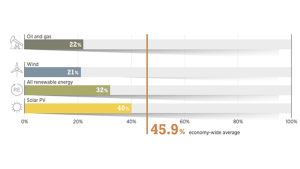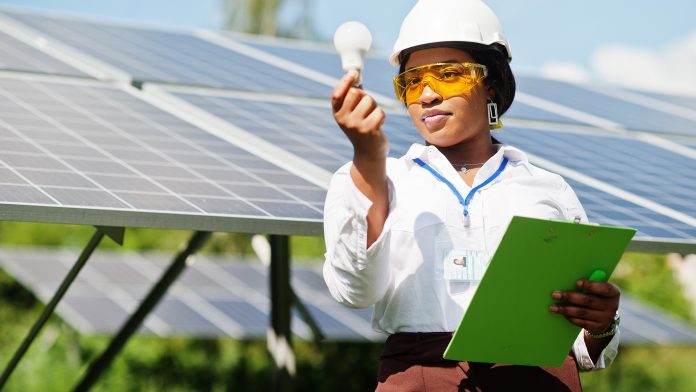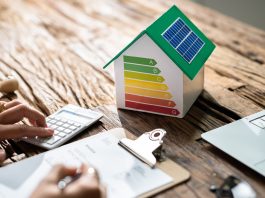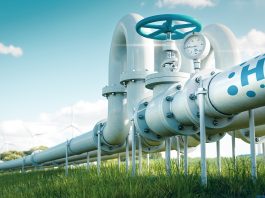Christine Lins, Co-Founder and Executive Director of Global Women’s Network for the Energy Transition (GWNET), discusses the importance of gender balance in the energy transition and opportunities for women in the sector.
The energy sector workforce is characterised by a gender gap greater than most other sectors. As stated in the report Renewable Energy: A Gender Perspective by the International Renewable Energy Agency (IRENA), there are only 22% of women in the oil and gas sector workforce and 32% in the renewable energy workforce.

According to Ernst & Young’s Women in Power and Utilities Index, only 5% of board executives and 16% of board members of the top 200 utilities are women.
Supporting women in the energy sector
In the Global Roadmap for Accelerated SDG 7 Action in Support of the 2030 Agenda for Sustainable Development and the Paris Agreement on Climate Change, published in early November 2021 and taking into account the UN GA High-Level Dialogue on Energy, UN Secretary-General Guterres emphasises that “gender equality and women’s empowerment must be prioritised, including empowering women in the design, production and distribution of modern energy services, including for productive uses, as well as equal representation of women in decision-making processes in the area of energy”.
Women have a lot to offer the sustainable energy sector. Scientific research has found that a diverse workforce delivers better results, not only in terms of increased creativity and innovation potential but also related to better decision-making and greater profits.
Initial research findings have also led to conclusions that companies with more women on their board of directors are inter alia more likely to invest in renewable power generation, mitigate climate change and proactively address environmental concerns[1]. Still, this potential has not yet translated into a substantially narrower gender gap in the energy sector.
Creating more jobs through decarbonisation goals
The climate goals set in the Paris Agreement mean nothing less than a total decarbonisation of the energy sector by 2050. Renewables must play a major role in that process. National governments are increasingly recognising the economic and social benefits generated by renewable energy.
The deployment of renewables contributes to growth in gross domestic product and creates employment opportunities. In 2022, renewable energy employment increased to reach a record high of 13.7 million jobs[2].
Considering that the workforce in the renewable energy sector is predicted to grow from 13.7 million today to about 42 million in 2050, the attraction of female talent will be crucial to ensure a thriving sector.
The COP28 Global Stocktake reports called on all countries to accelerate the transition away from fossil fuels. At the same time, the Global Renewables Alliance sought commitments to triple renewable energy capacity globally and double the annual rate of energy efficiency improvements by 2030.
These goals mark the beginning of the end of fossil fuels, renewed momentum for renewable energy investment, and the creation of high-quality sustainable jobs.
According to converging projections by international organisations such as IRENA, IEA, and the European Commission, more jobs will be created in new energy fields throughout energy transitions than will disappear in the old sectors – coal, gas, and oil.
This will not happen automatically, however; new jobs will not spontaneously spring up where old jobs disappear. Planning energy transitions in an inclusive and participatory way is, therefore, of the essence; the people who are affected by the energy system transformation need to be included in all stages of the transformation process.
GWNET: Advancing gender balance in the energy transition
GWNET, the Global Women’s Network for the Energy Transition, works with partners from all around the world to make sure that energy transition recognises and harnesses all innovative talent available from both men and women.
The network, which currently consists of over 4,000 members from over 150 countries, is open to individuals and corporations who are committed to advancing the gender balance in the energy sector and who wish to connect with their peers to advance the energy transition more rapidly.
As solid data is fundamental for any political action, GWNET collaborates with international partners such as IRENA, the World Bank, OSCE and others to generate data on the status and role of women in energy.
Furthermore, GWNET collaborates with national and regional women in energy networks throughout the world to empower women in energy and exchange innovative concepts and approaches.
Last but not least, GWNET leads the development of several regional and global mentoring programmes for women in energy to advance the role of women as agents of change in society and promote best practices within the sustainable energy sector.
In the last five years, more than 900 women from 90+ countries have participated in these mentoring programmes, and GWNET has built up a pool of over 750 mentors who volunteer some of their time to empower junior and mid-career women in energy.
References
- McElhaney, K. A. and Mobasseri S., Women create a sustainable future, UC Berkeley Haas School of Business, 2012. (https://www.ibe.org.uk/userfiles/women_create_sustainable_valueoct2012.pdf)
- Renewable energy and jobs: Annual review 2023 (azureedge.net)









